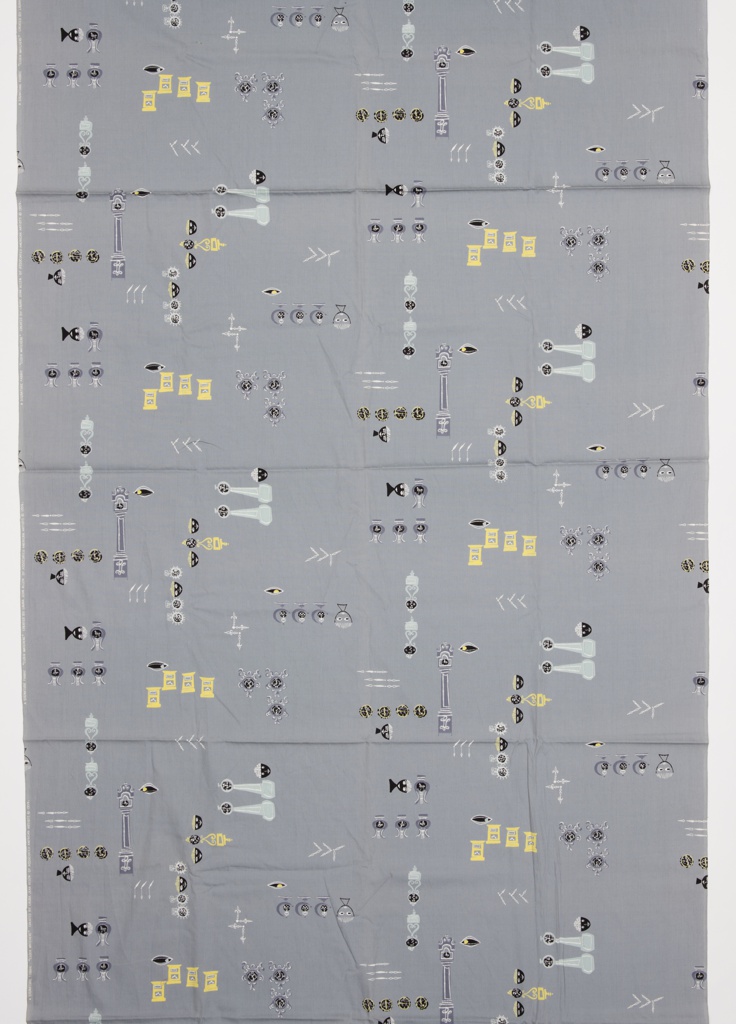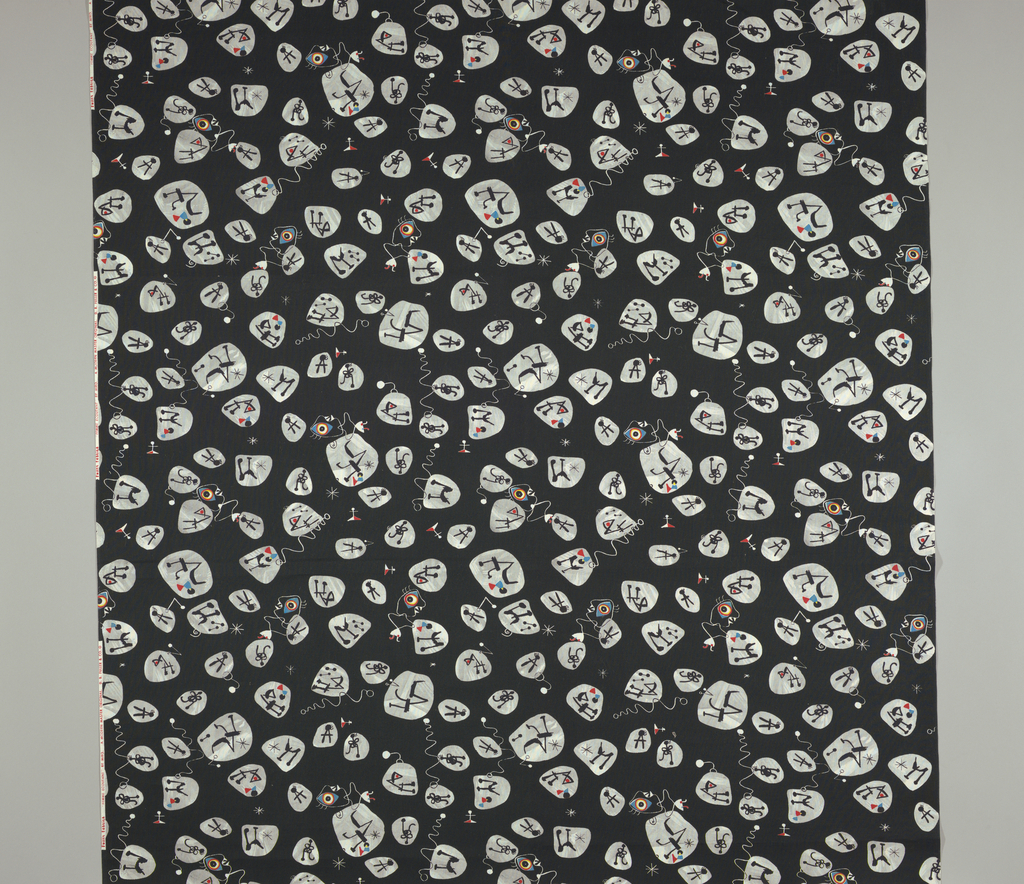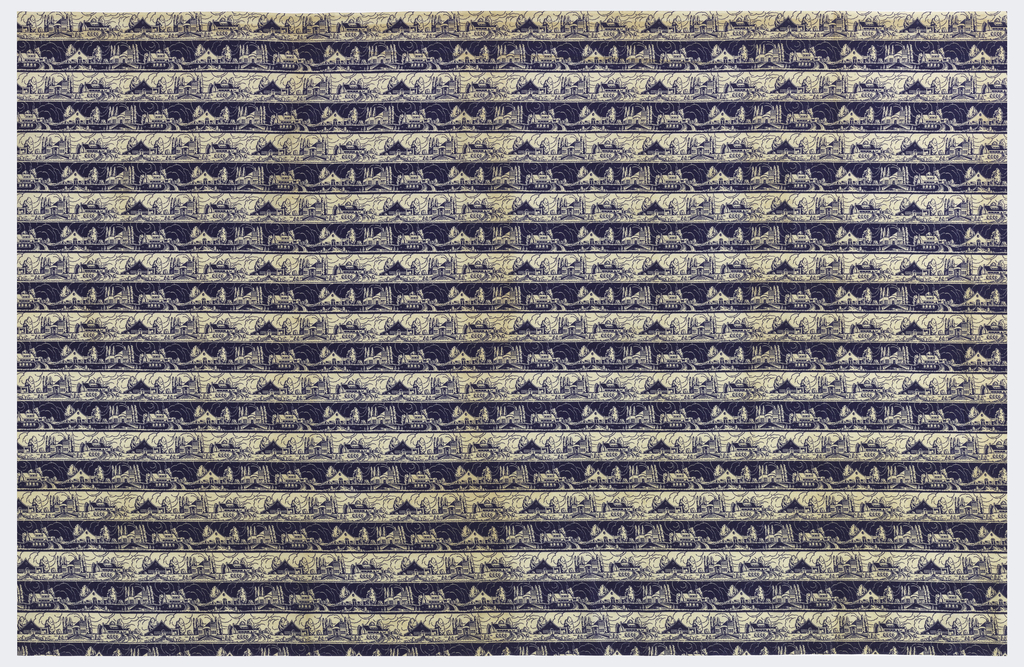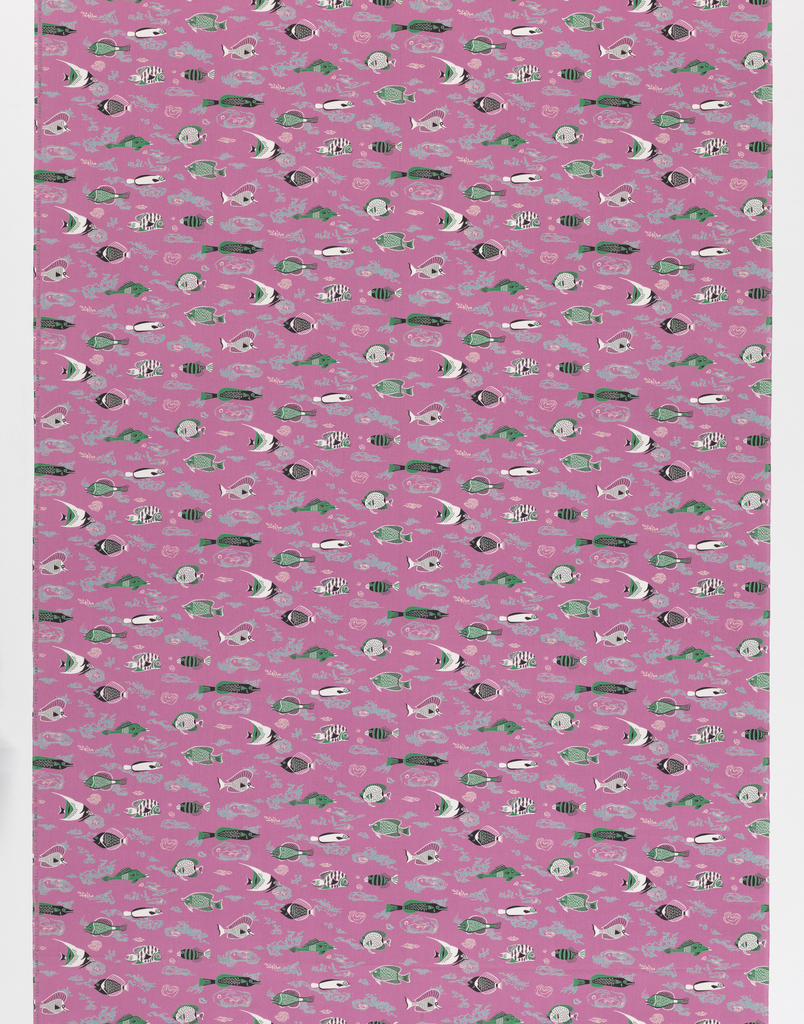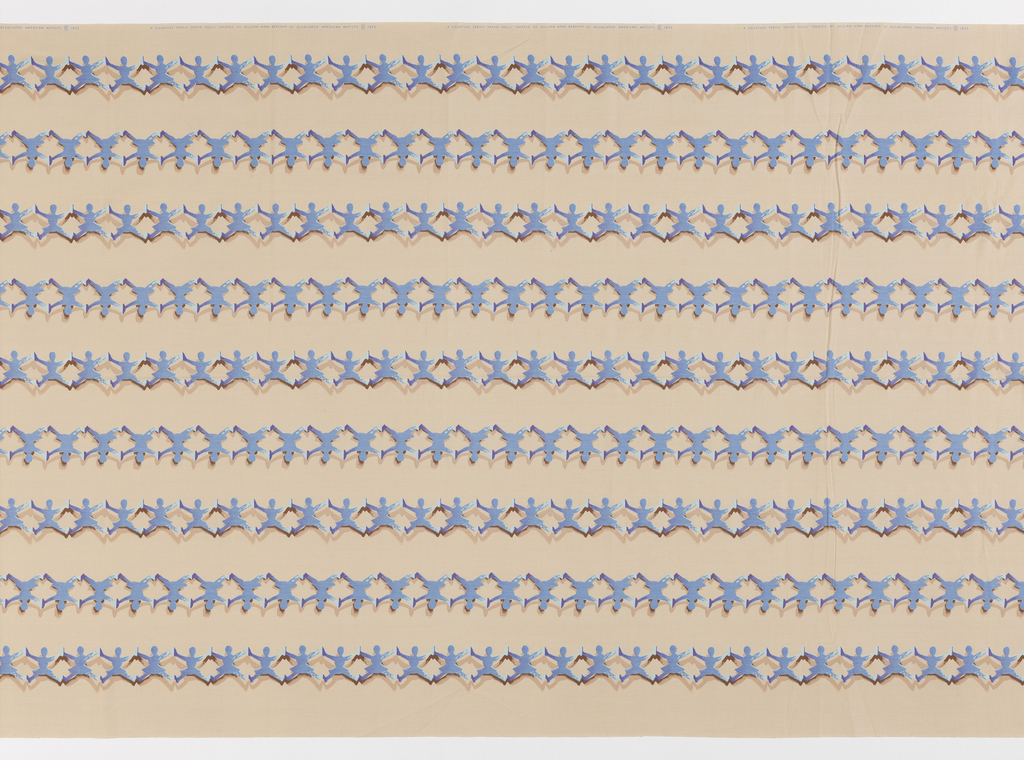Laura Jean Allen rose to fame by the time she was 30 as an illustrator for Seventeen magazine and designer of clothing and cosmetic compacts for teenaged girls. She became involved with Associated American Artists in the early 1950s and was soon one of the group’s most prolific textile designers. Upon the 1954 release of...
In 1953, Dan Fuller, president of Fuller Fabrics, invited five of the 20th century’s most distinguished artists: Pablo Picasso, Fernand Léger, Marc Chagall, Joan Miró, and Raoul Dufy, to collaborate on a line of textiles to be called the Modern Master Series. The concept was unique in that the artists were not commissioned to produce...
This charming cotton dress fabric was anonymously donated and remains anonymous itself, as there are no designer or manufacturer markings in the selvedges. It was probably intended for the home-sewing market, for which many so-called “conversational” prints were produced and made into women’s full, gathered shirts or men’s casual shirts. This piece satirizes the postwar...
Painter and commercial illustrator Richard Munsell began creating advertising artwork for Maxwell House in the 1940s. His ads, the best known of which depicts coffee time at a living-room sewing bee, appeared within a series entitled “Part of the American Scene.” He also designed textiles that appealed to the American experience: lazy summer days spent...
In Paper Dolls, one of many trompe-l’oeil designs by William Ward Beecher, blue paper cut-outs join at the hands and feet in the form of a child’s paper chain. The figures cast shadows on the beige ground behind them, so that they appear to hover above the surface. The February 17, 1953 issue of Women’s...
Silk designs of 1695 to 1715, commonly termed ‘bizarre,’ were characterized by sinuous lines, strong diagonal movement, and motifs in strangely juxtaposed scales, which might include architectural elements, chinoiserie, and fantastical fruits and flowers. The seventeenth century was the age of exploration, and fashionable novelty was found in the rare and strange. Botanical gardens such...
